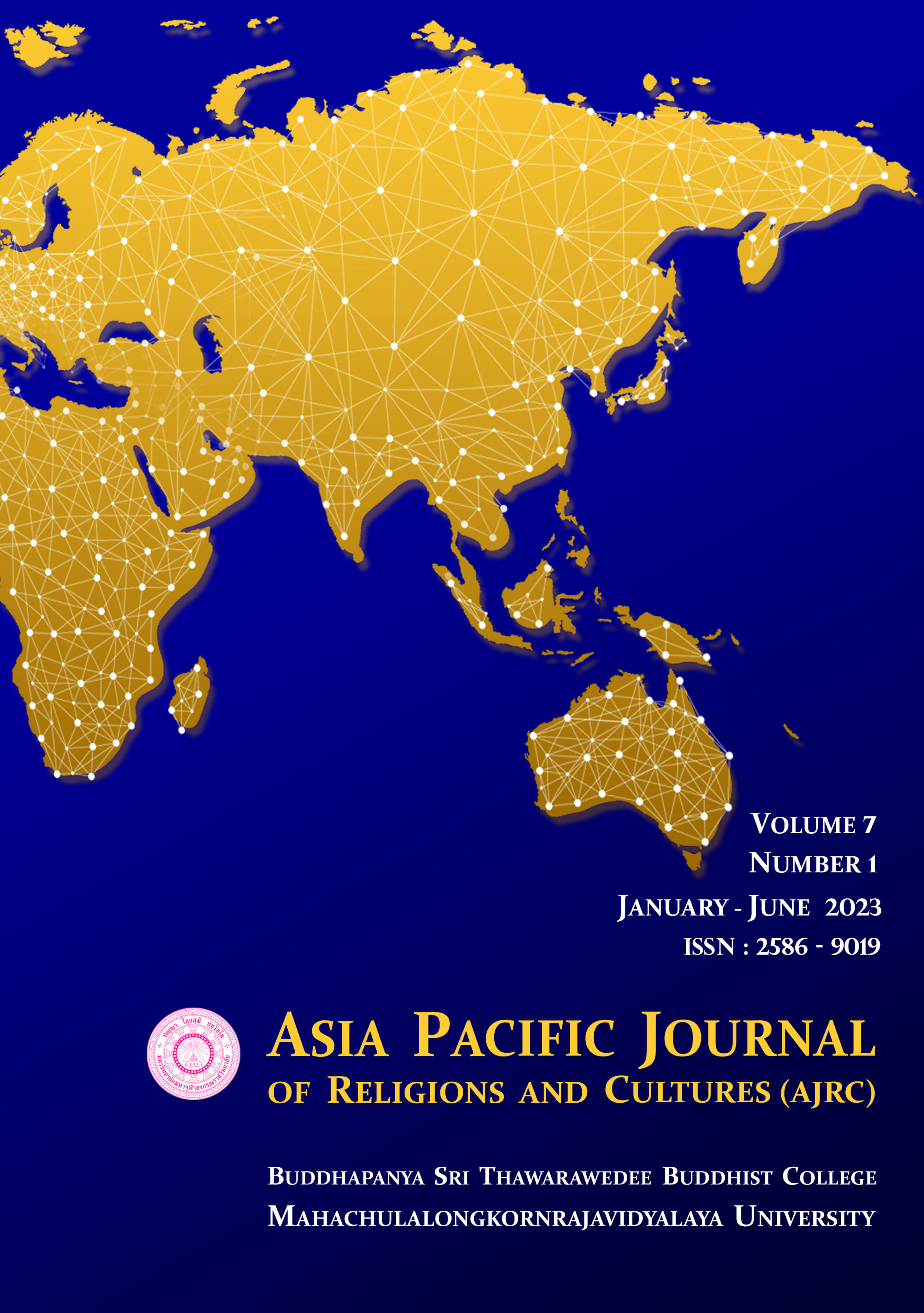FOLLOWING THE FOOTSTEPS TO SEARCH FOR THE WAT RAKANG AMULET OF LUANG POO TOE PROMMARANGSI
Main Article Content
Abstract
Abstract
The objectives of this qualitative research article were to find the reason for creating the Phra Somdej Wat Rakang (Temple of Bell) Amulet of Luang Poo Toe Prommarangsi (Grand Pa Toe Prommarangsi) and to find the places where the Phra Somdej Wat Rakang Amulet of Luang Poo Toe Prommarangsi has been kept after creation, conducted with the qualitative research method. The 20 key informants who participated in this research were purposefully selected from academicians, village folk-wise persons who know the history of Phra Somdej Wat Rakang Amulet of Luang Poo Toe Prommarangsi
Findings were that the main reason to create the Phra Somdej Wat Rakang Amulet of Luang Poo Toe Prommarangsi, the Abbot of Wat Rakang (Temple of Bell) was to extend the life of Buddhism to 500 years as predicted. Luang Poo Toe divided two methods to extend the life of Buddhism, the short and the long methods. The first method was to create the Somdej Amulet (Lord of Amulet) on auspicious occasions according to traditions and present the royal merits to the King at that period so that the King would present to His Noble persons, high ranking Officers, and general people. The second method to extend the long life of Buddhism was to keep the Amulet he created in the cells at various monasteries as the heritage for Buddhists to worship and extend the life of Buddhism in the future.
The places where Luang Poo Toe Prommarangsi kept the Amulet to extend the life of Buddhism as the long method are 13 monasteries as follows: 1. Wat Sa Tue. Ayutthaya Province, 2. Wat Mai Amataros. Bangkok, 3. Wat Chai Yo Varavihara. Ang Thong Province, 4. Wat Klang Klong Khoi. Ratchaburi Province, 5. Wat Lakorntam. Bangkok, 6. Wat Kudhi Thong. Ayutthaya Province, 7. Wat Rakangkositaram. Bangkok, 8. Wat Intraviharn. Bangkok, 9 Wat Mai Pakbang. Ayutthaya Province, 10. Wat Kalayanamitr. Bangkok, 11 Wat Cheepakhao. Bangkok, 12 Wat Pratatpanom. Nakornpanom Province, 13 Wat Borvornvittharam. Bangkok.
Article Details

This work is licensed under a Creative Commons Attribution-NonCommercial-NoDerivatives 4.0 International License.
References
Amara Pongsapich, (1998). Culture, Religion, and Ethnicity: An
Anthropological Analysis of Thai Society. 5th Printing, Bangkok: Chulalongkorn University Press.
Anunsiriwat, P. (2016). An Analysis of Phra Khun Phaen Wat Yai Chai Mong Khon. Mekong Salween Civilization Studies Journal, 7(2), 177-189.
Busarakam and Kanchanawat Meeting (2513). Amulet The Story of Magical.
Reprinted 2 Bangkok Satya printing.
Chalam Chotchuang and Manat Yokhan (1991). Somdej Toe. Bangkok: Siam
Art Printing.
Chantanee, A. (2016). The economy of Amulets in Thailand. Journal of
graduate studies Valaya Alongkorn Rajabhat University, 10(1), 94-105.
Chidtakhop, K. (2006). The Amulet. Bangkok: The Office of National
Buddhism Buddhist. Coedes, G. (1969). The Amulet legend. (18th ed.). Bangkok: Krung Siam Printing.
Kedted, B. (1992). Science and Art of language. Kalasin: Prasan Printing.
Phrabaidega Support.
Pon Nilphung (2007), Bibliography Tidej Phra Somdej. Bangkok: Suttha
Printing.
Rattanakij, W. (2007). Amuletic Buddha Images: Communication and the
Consumption of Signs. M.A. thesis Thammasat University.
Somporn Sukkasem, (1999). A fact of life. Bangkok: Ban Somdet Chaopraya
Rajabhat Institute.
Tabaselo. (2017). History, Propagation Routes of Buddhism and Principle of
Buddhadhamma in the Lopburi Period. Journal of MCU Peace Studies, 5(2), 75- 85.
Triyampawai (1964). Applied amulets. Bangkok: Klang Wittaya.


